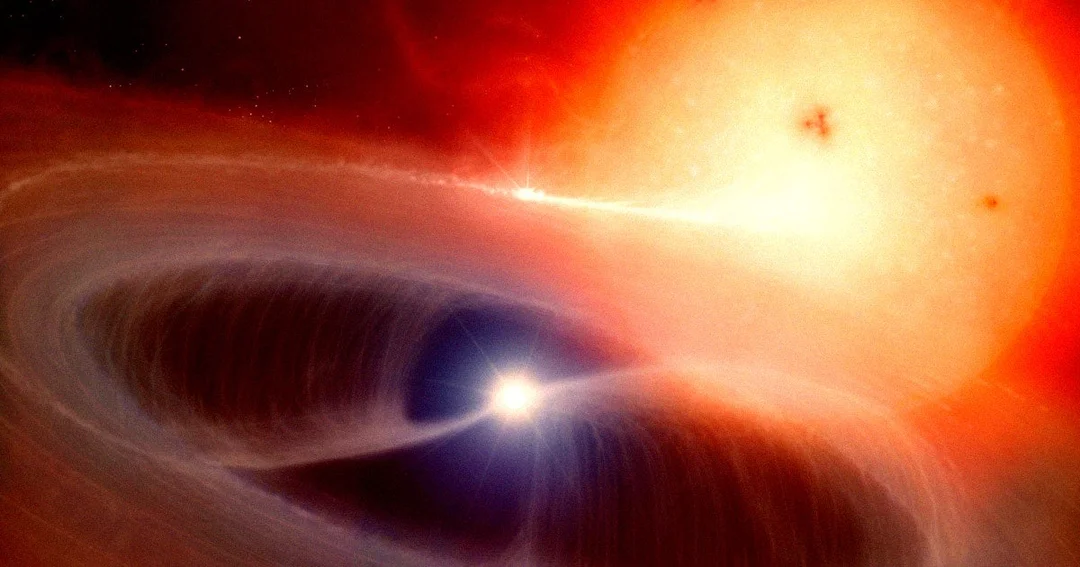
Scientists Baffled by Retrograde Planet Orbiting Dual Stars and a White Dwarf: A Cosmic Anomaly
In a surprising discovery that challenges existing theories of planetary formation, astronomers have observed a bizarre exoplanet orbiting a binary star system that includes a white dwarf. This planet, located 72 light-years away in the Nu Octantis system, exhibits a retrograde orbit, meaning it orbits its stars in the opposite direction. The findings, published in the journal Nature, have ignited debate and prompted researchers to rethink the complex dynamics of multi-star systems.
First discovered in 2004, the planet in Nu Octantis is approximately twice the size of Jupiter. Its existence so close to its twin stars initially puzzled scientists, with some suggesting its presence was improbable. Now, a team of international researchers proposes a radical explanation: the planet orbits one of the stars in reverse, sandwiched between the two stars in a precarious and unprecedented orbital dance.
"The existence of this planet has been controversial, because there were no observational precedents and we expect planets to form in prograde orbit if they form at the same time as the stars," explained University of Hong Kong professor Man Hoi Lee. This challenges conventional wisdom and opens new avenues for understanding planetary formation and evolution.
Adding to the enigma, one of the stars in the system is a white dwarf, signaling it is nearing the end of its life cycle. The scientists estimate the system's age to be around 2.9 billion years, but they believe the planet formed much later. Two possible scenarios emerge: either the planet initially orbited both stars and shifted to its retrograde trajectory after one became a white dwarf, or it accumulated mass from the white dwarf itself.
According to a New Scientist report, the planet's unusual orbit has forced scientists to consider a broader range of possibilities regarding star and planet formation. IFLScience notes that more research is needed to unravel the planet's evolutionary history. Observations of similar binary systems, like HD 59686, may provide additional insights, although current data don't conclusively confirm a retrograde orbit in that system either.
"Observations of other planets in tight binary systems with late-stage or post-main- sequence stellar components will provide additional clues for us to better understand the formation and dynamical evolution of planetary systems," the research team wrote in their paper.
The presence of the retrograde planet raises intriguing questions about planetary system development. Did the planet migrate inward due to gravitational disturbances, or did it form from a disk of material left over from the white dwarf's evolution? The rarity of such systems suggests that unique conditions are required for their formation, challenging current models.
What do you think about this cosmic anomaly? Could this discovery rewrite our understanding of planetary formation in binary systems? Share your thoughts and theories in the comments below!